The Independent's journalism is supported by our readers. When you purchase through links on our site, we may earn commission.
Four waste-free recipes to help fight climate change from your kitchen
Potatoes, carrot, apples and onions – they’re the most thrown away foods in our kitchens, but they don’t have to be any more with these delicious waste-free recipes, says Hannah Twiggs

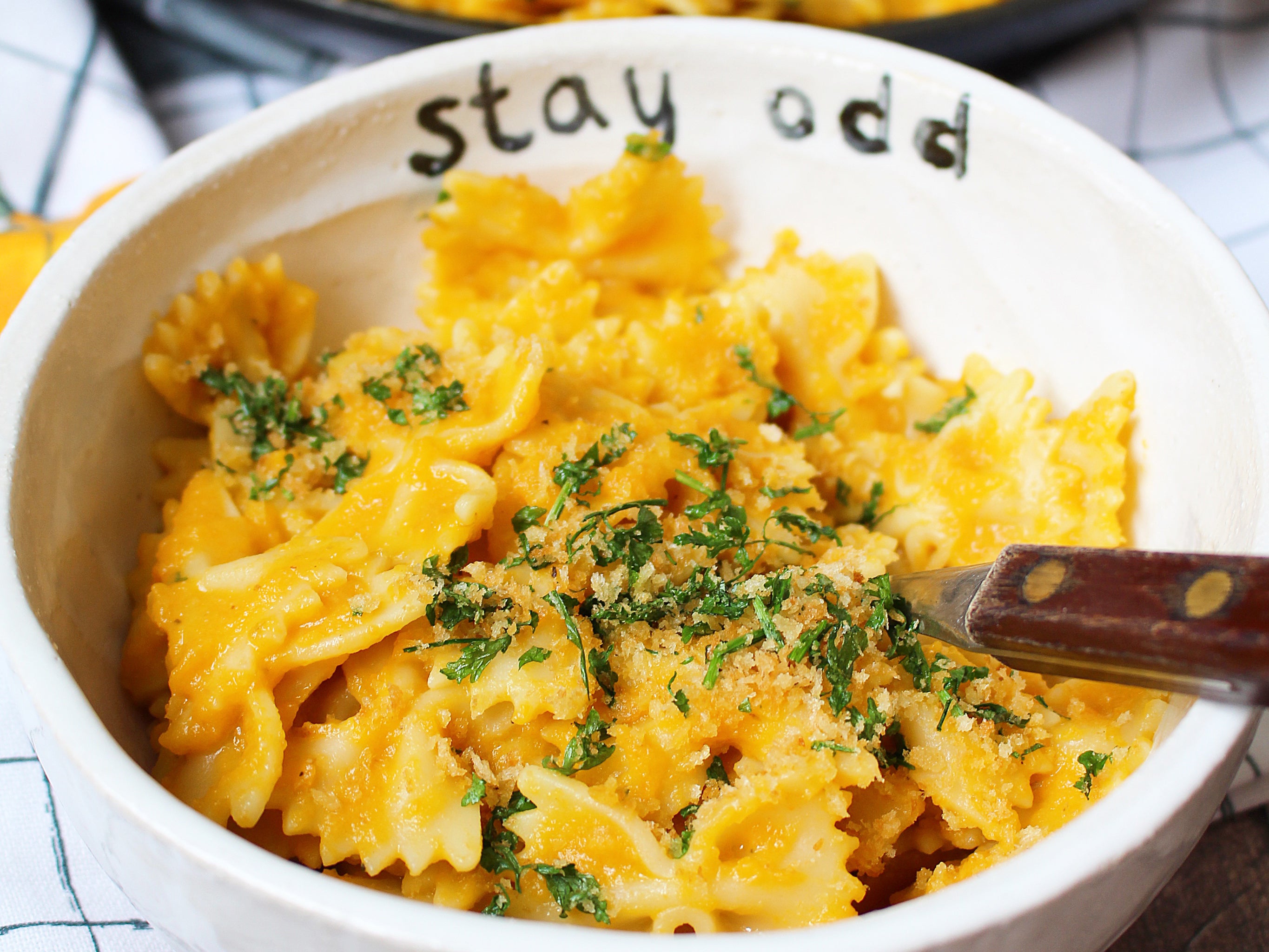
Your support helps us to tell the story
From reproductive rights to climate change to Big Tech, The Independent is on the ground when the story is developing. Whether it's investigating the financials of Elon Musk's pro-Trump PAC or producing our latest documentary, 'The A Word', which shines a light on the American women fighting for reproductive rights, we know how important it is to parse out the facts from the messaging.
At such a critical moment in US history, we need reporters on the ground. Your donation allows us to keep sending journalists to speak to both sides of the story.
The Independent is trusted by Americans across the entire political spectrum. And unlike many other quality news outlets, we choose not to lock Americans out of our reporting and analysis with paywalls. We believe quality journalism should be available to everyone, paid for by those who can afford it.
Your support makes all the difference.Are you taking on the Zero Waste Week challenge this year? The campaign, which has run annually since 2008, aims to raise awareness about the true villain in the climate crisis: food waste.
Approximately 2.5 billion tons of food goes to waste each year – that’s about 40 per cent of all the food which is grown. In fact, food waste has been identified as the number one solution to preventing the planet from becoming 2C warmer by 2100.
“Food waste generates 10 per cent of all climate altering greenhouse gas emissions because it uses a huge amount of water and energy in the growing, transporting and storage process before it even reaches our plates,” says Emilie Vanpoperinghe, CEO and co-founder of Oddbox. “To put it into perspective, if food waste was a country, it would be the third largest contributor to greenhouse gas emissions behind only China and the US.”
Vanpoperinghe says that while there are issues across the entire supply chain that contribute to the food waste crisis, individual actions can collectively make a big difference. At home, food waste is back up to pre-pandemic levels, according to Love Food Hate Waste, so embracing cooking to minimise waste is a great and easy way to eat more sustainably.
That’s why Oddbox has come up with four exclusive recipes for Independent readers to help them embrace wasteless cooking this week and beyond. These delicious, waste-free recipes have been concocted by Oddbox chefs using the produce we waste the most: potatoes, carrots, apples and onions.
Balsamic onion pizza
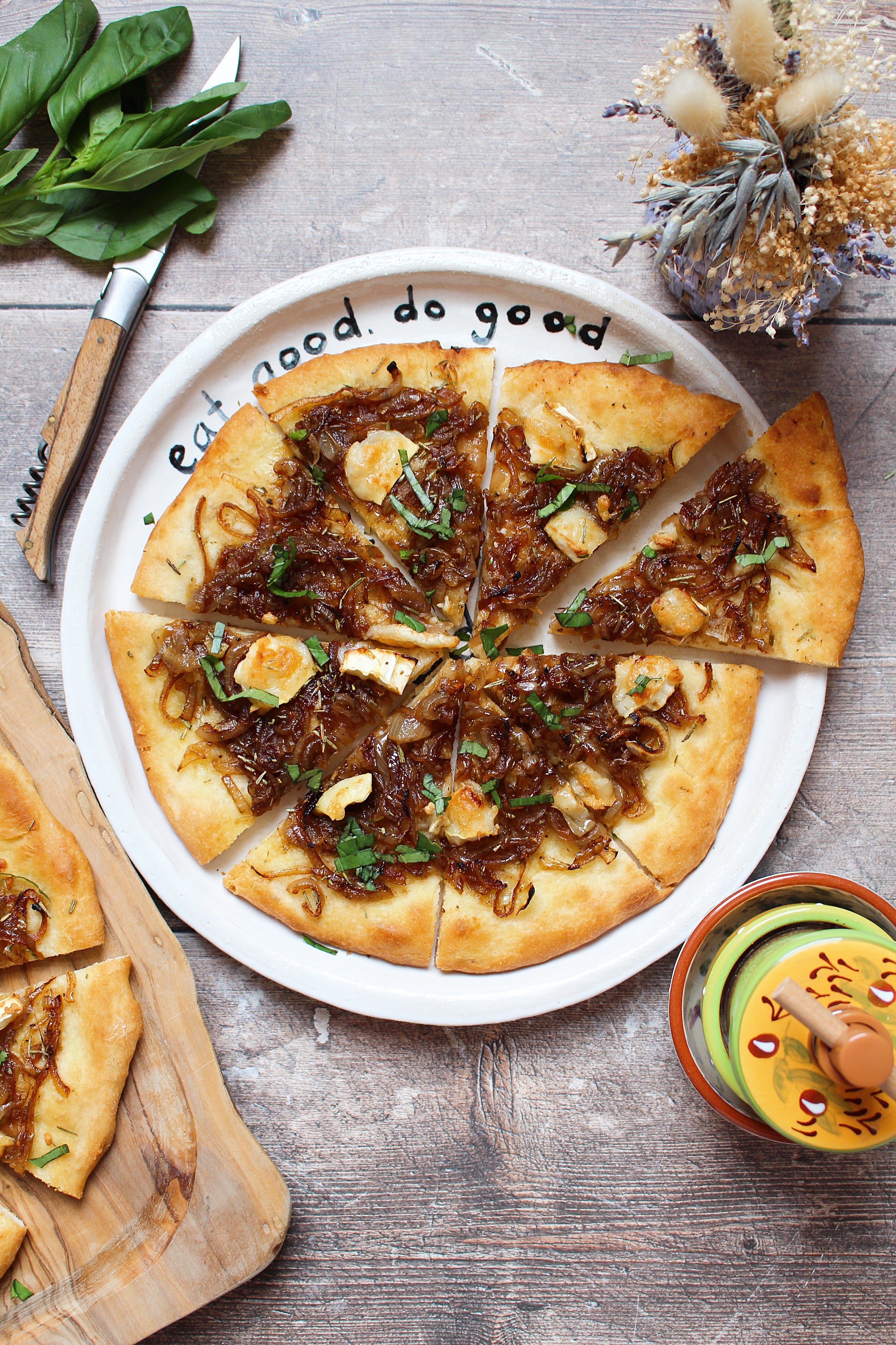
Roughly 17 per cent of all onions are wasted before they even leave the farm. Onions are such a fantastic staple. Make the most of the ones in your kitchen with this balsamic onion pizza recipe. The onions are cooked until tender, deglaze with an onion peel stock and balsamic vinegar. The pizza is also topped with goat cheese and rosemary – it’s crunchy, creamy, salty and sweet all at the same time.
Substitute: No onions? Try with shallots instead. No goat cheese? Use mozzarella/vegan mozzarella instead. More toppings? Try adding a few black olives, a pinch of chilli flakes, sliced mushrooms, basil leaves or spinach.
Serves: 2
Prep time: 40 minutes | Cook time: 10 minutes
Ingredients:
For the pizza topping:
3 onions
1 tbsp balsamic vinegar
1 tsp honey/maple syrup
70g goat cheese, chopped
2 sprigs of rosemary
1 bay leaf
1 tbsp butter
1 tsp olive oil
Salt and pepper
For the pizza dough:
200g flour (type 00)
5g fast action dried yeast
½ tsp fine salt
½ tsp caster sugar
1 tbsp olive oil
160ml water
Method:
1. Make the pizza dough: in a large bowl, stir together the flour, yeast, sugar and salt. Make a well in the centre, add the water, olive oil, and mix with a wooden spoon until combined. Tip out onto a floured surface and knead for 1 minute, just until smooth. Place the dough back in the bowl, cover the bowl with a clean tea towel and let sit at room temperature while you prepare your pizza toppings (approximately 10-15 minutes).
2. Make the onion stock: peel and thinly slice the onions. Place the onion peels in a saucepan, along with a spring of rosemary and a bay leaf. Cover with water (about 150ml), then bring to a boil and gently simmer for 10 minutes. The onion peels act just like a tea bag and will infuse in the water – which will be used in the next step.
3. Make the onion topping: melt the butter in a large frying pan over medium-high heat. Add the olive oil (will prevent the butter from burning), along with the onions, 1 sprig of rosemary chopped, salt and pepper, and cook for 10 minutes, until softened. Add the warm onion stock, and cook for 5 minutes or until the onions are golden, caramelised and the stock has reduced. Remove from the heat, and add the balsamic vinegar and honey/maple syrup.
4. Roll the pizza dough: preheat the oven to 220C/200 fan/7 gas mark. Grease a large (or 2 medium) baking tray with olive oil. Turn the dough out onto the oiled tray, and using your fingers, push/roll the dough out until it is pretty thin.
5. Add the toppings: drizzle the pizza dough with a little olive oil. Add the balsamic onions, goat cheese, and some rosemary leaves. Transfer to the oven and bake for 10-12 minutes, or until the crust is golden and the cheese has melted.
How to store: Store your pizza in the fridge for up to 3 days. To reheat, pop it in the oven at 190C/170 fan/5 gas mark, for 5-10 minutes. You can make the balsamic onions in advance, and store it in the fridge for up to 5 days.
Leftovers: Make double quantities of the balsamic onions (and onion peel stock) and use it to make onion soup. Add the cooked onions, and onion peel stock to a food processor and blend until smooth. Serve with grilled cheese toasts.
Creamy carrot miso pasta
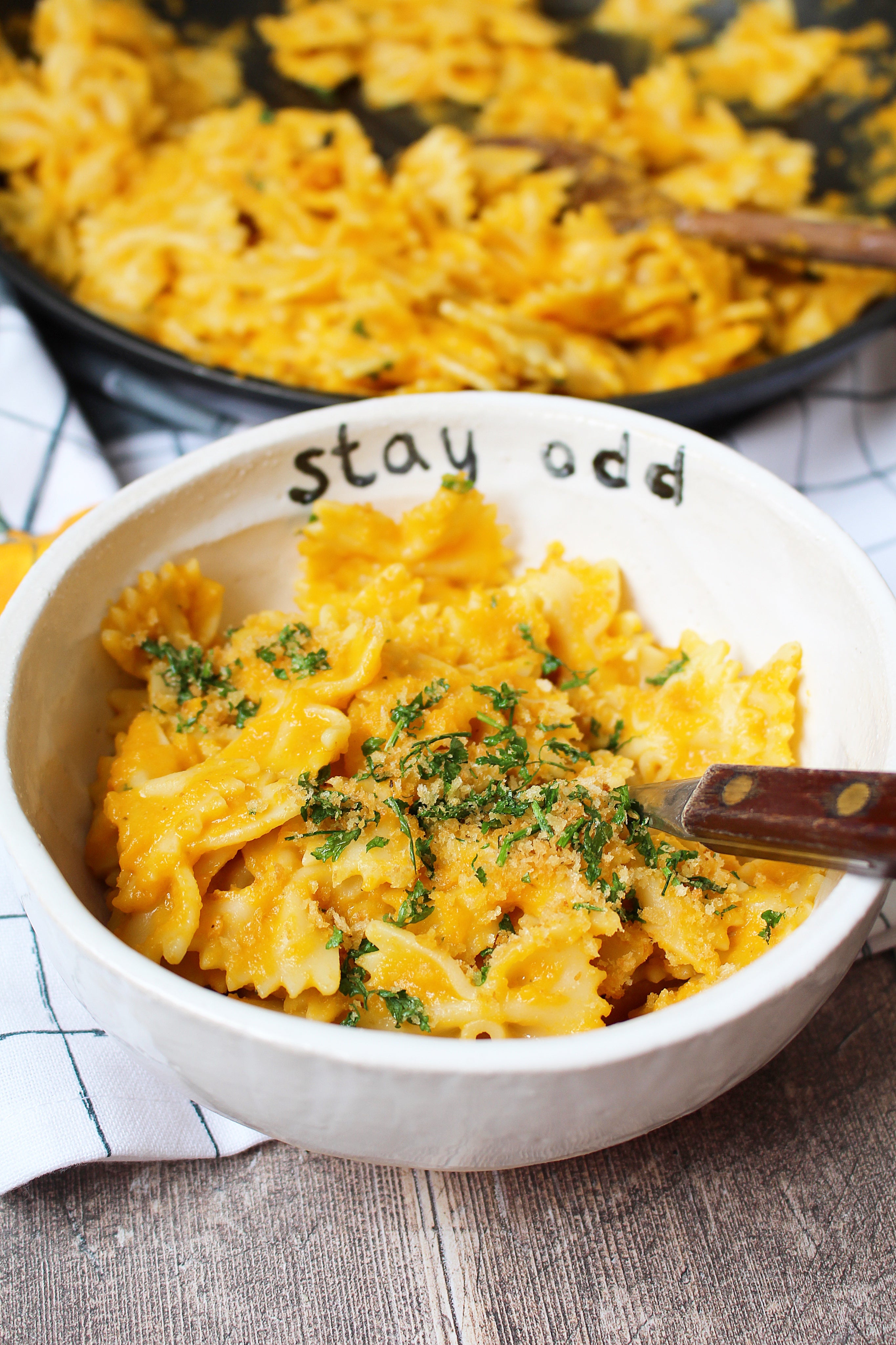
A third of all carrots grown are wasted at farm-level. In this delicious recipe, carrots are cooked with onion, garlic and miso paste until tender, then placed in a food processor and blended until creamy and smooth. Served with al dente pasta for a true Italian feel and crunchy parsley breadcrumbs.
Substitute: No carrots? Try with parsnips instead. No onion? Use shallot instead. No parsley? If you have carrot tops, then use them instead of parsley. Otherwise, you can use coriander. No farfalle pasta? Use your favourite pasta instead.
Serves: 2
Prep time: 10 minutes | Cook time: 20 minutes
Ingredients:
For the sauce:
3 carrots
½ onion, chopped
3 garlic cloves, chopped
1 tbsp white miso paste
1 tbsp olive oil
For the topping:
⅓ bunch of parsley
Black pepper
For the pasta:
200g farfalle pasta
Method:
1. Make the sauce: heat the olive oil in a medium saucepan, over medium heat. Cook the carrots, onion and garlic for 5 minutes, until softer. Add the miso paste, 300ml of water and a little black pepper. Bring to a boil, cover the pan, lower the heat and simmer gently until carrots are fork-tender, about 15 minutes.
2. Cook the pasta: in the meantime cook the pasta, in boiling salted water until al dente. Reserve 2 tablespoons of pasta water, then drain and set aside.
3. Make the topping: heat up 1 teaspoon of olive oil in a frying pan, and add the breadcrumbs. Fry until golden, turn off the heat and stir in the chopped parsley.
4. Blend the sauce: place the carrot mixture in a food processor, along with the reserved pasta water and blend until creamy and smooth. Pour over the pasta, mix well to coat and serve with the parsley breadcrumbs.
How to store: Store in an airtight container, in the fridge for up to 5 days. Freeze for up to 3 months. The carrot miso sauce can be made in advance, stored in the freezer and used as needed.
Leftovers: Make a pasta gratin: Add the leftover carrot miso pasta sauce into a baking dish. Cover with grated cheese/vegan cheese, and bake at 180C/160 fan/4 gas mark, until golden.
Potato cakes
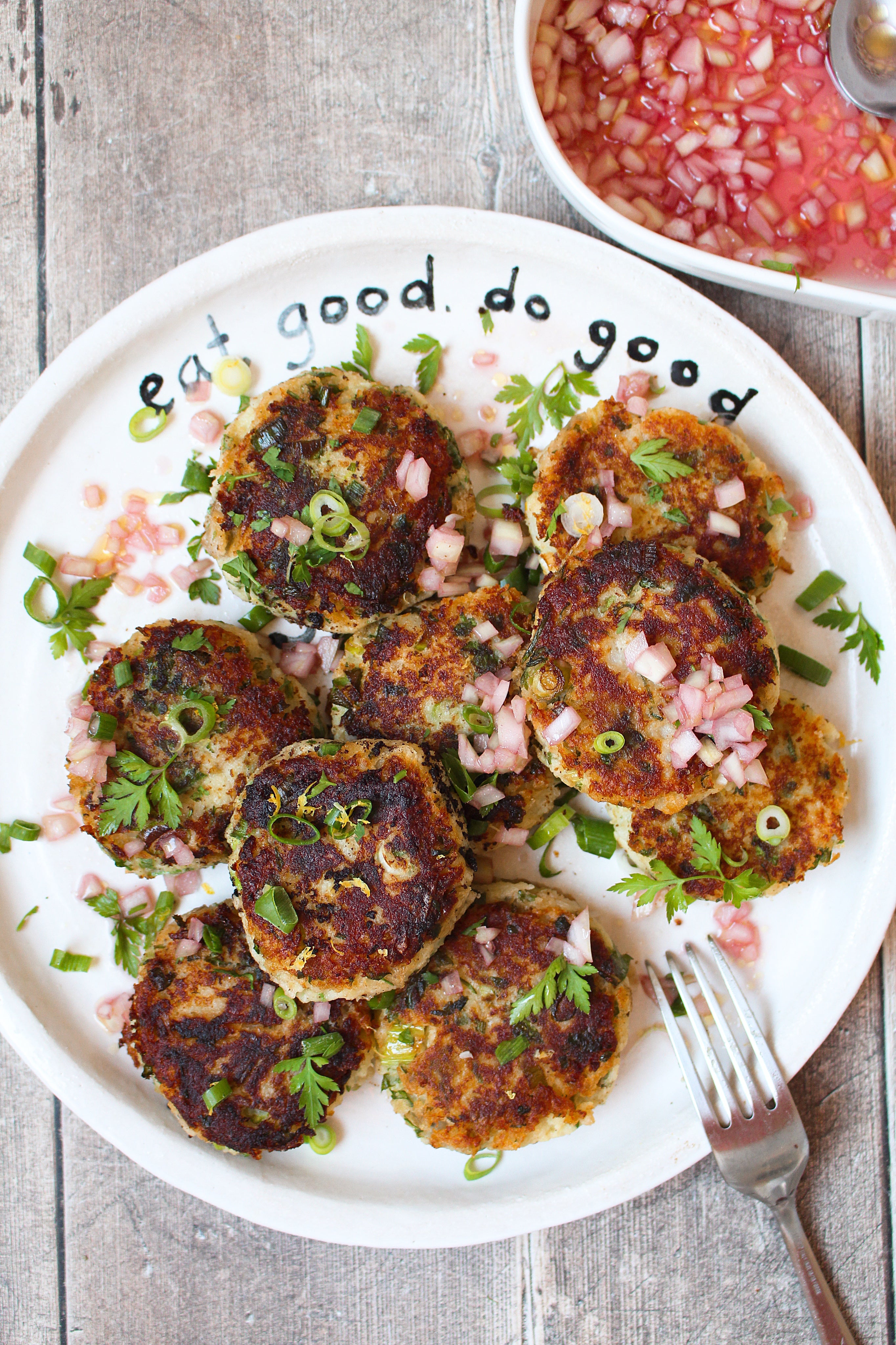
We throw away 4.4 million whole potatoes each day in the UK in our homes. Try these little herby cakes to get the best out of your potatoes, skin and all. They are made from mashed potatoes shaped into small patties, and fried until golden brown, and are served warm with a simple shallot and red wine vinegar sauce. These are fun to make so get the kids involved in the kitchen, and cook a batch to freeze.
Substitute: No parsley? Use any fresh herbs you have on hand – dill and mint would be delicious! No egg? Vegans can substitute the egg for flaxseed. No lemon? Try with lime juice and zest instead. No shallot? Use a small onion instead.
Serves: 4
Prep time: 15 minutes | Cook time: 30 minutes
Ingredients:
4-5 potatoes
⅓ bunch of parsley, chopped
3 spring onions, chopped
1 egg
1 tsp mustard
Juice and zest of ½ lemon
3 tbsp breadcrumbs
Vegetable oil
For the sauce:
1 shallot, finely chopped
6 tbsp red wine vinegar
1 tbsp olive oil
Method:
1. Cook the potatoes: scrub clean the potatoes and rinse under cold water. Chop with the skin on, and place into a saucepan. Cover with water, add a good pinch of salt and bring to the boil. Cover and simmer for 10-15 minutes, or until tender. Drain and mash using a fork.
2. Make the potato cakes: in a large bowl, mix mashed potatoes, breadcrumbs, parsley, egg, mustard, lemon juice, lemon zest, and spring onions. Mix well to combine and season to taste with salt and pepper. Shape into small patties – if too sticky, wet your fingers with water. Place patties on a plate, and freeze for 10 minutes. This will help the patties hold their shape better when cooking.
3. Make the sauce: in the meantime, mix the red wine vinegar, olive oil and shallot into a small bowl. Set aside.
4. Cook the potato cakes: heat a generous drizzle of vegetable oil in a large frying pan over medium heat. When the oil is hot, fry the potato cakes on each side for about 4 minutes, or until golden brown. Serve warm with the shallot sauce.
How to store: Store the potato cakes in the fridge for up to 3 days. You can freeze the potato cakes (uncooked or cooked) for up to 3 months.
Leftovers: Place leftover potato cakes on a large baking tray, sprinkle with cheese and bake at 180C/160 fan/4 gas mark, for 10-15 minutes, or until the cheese has melted over. Serve alongside a green salad. The potato cakes are also delicious served with a dollop of creme fraiche/vegan creme fraiche.
Poached apples with salted toasted nuts
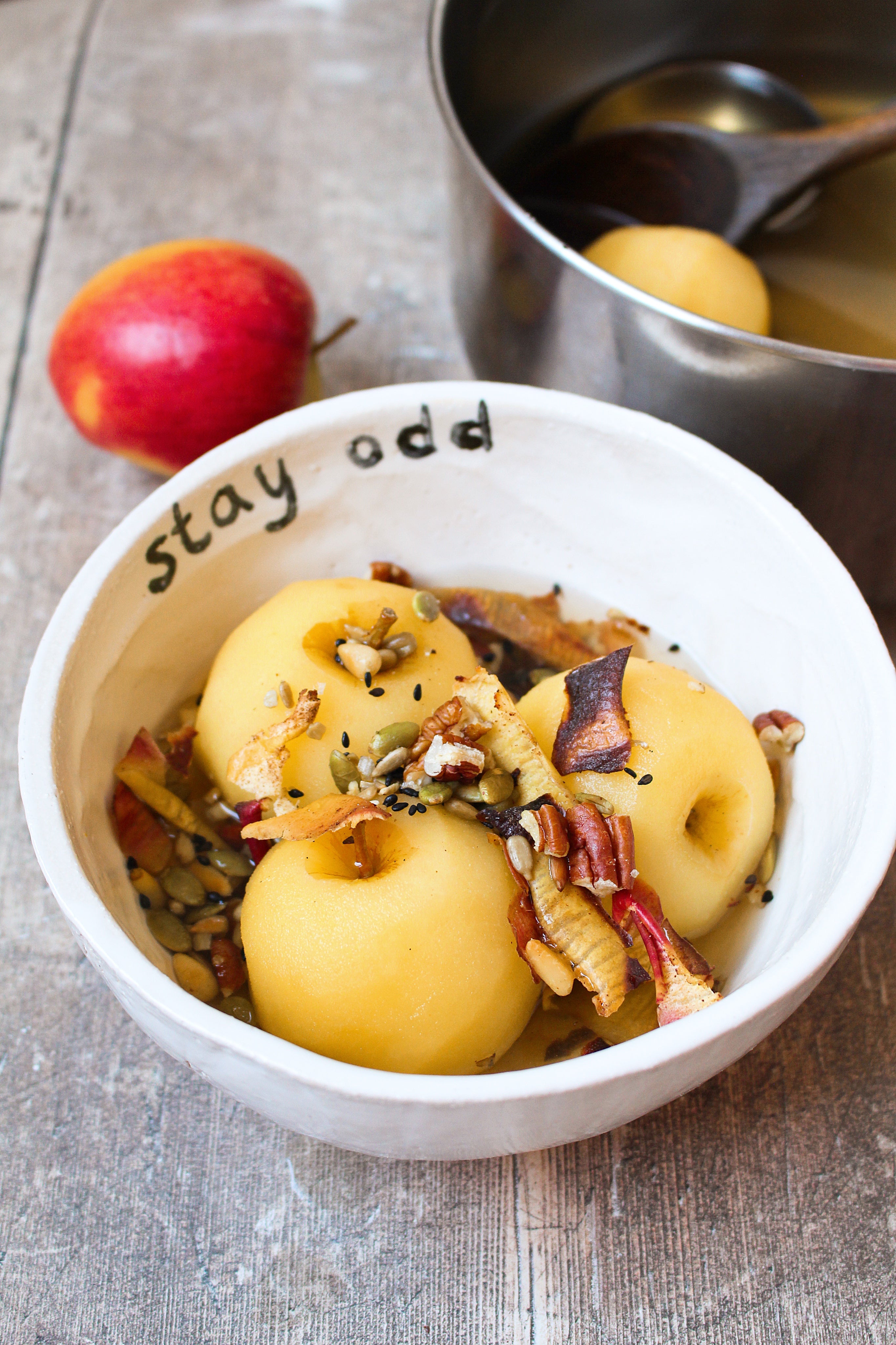
Twenty per cent of all apples grown on British farms go to waste. This easy dessert allows you to use up any spare, and can be prepped ahead. The apples are poached in a warm vanilla and maple syrup liquid, and served with apple peel crips and salted toasted nuts.
Substitute: No apples? Use pears instead. No maple syrup? Try with honey, golden brown sugar or agave syrup instead.
Serves: 4
Prep time: 10 minutes | Cook time: 15 minutes
Ingredients:
4 apples
For the syrup:
1 tsp vanilla paste
60g maple syrup
400 g water
For the topping:
4 tbsp seeds and nuts of your choice
½ tsp olive oil
1 pinch sea salt
1 pinch cinnamon
1 pinch ginger powder
Method:
1. Poach the apples: peel the apples – do not discard the peels. Place the apple in a saucepan, along with the water, maple syrup, and vanilla. Bring the liquid to the boil, then turn the heat down and simmer for 15 minutes, or until a sharp knife slips easily through the apple flesh. Take the pan off the heat and let the apples cool in the liquid.
2. Make the crisp apple peels: preheat the oven to 170C/150 fan/3 gas mark. Add the apple peels in a baking dish, along with the cinnamon and ginger powder. Toss to coat and bake for 10 minutes, or until crisp.
3. Make the salted toasted nuts: add the olive oil, seeds and nuts to a frying pan, and toast over medium heat, stirring often, for 4-5 minutes, or until lightly golden. Stir in the sea salt and set aside.
4. Serve the cooled apples with the maple vanilla syrup, the salted toasted nuts and crispy apple peels on top.
How to store: Store the apples in their syrup, in the fridge for up to 4 days. Store the toasted seeds, nuts and apple crisps in an airtight container, in a dry cool place.
Leftovers: Baked apple slices: Slice the poached apples in wedges, place in a baking dish and bake at 180C/160 fan/4 gas mark, for 15 minutes. Serve with coconut, or vanilla ice cream, and if you have any left, some of the toasted nuts and apple crisps too.
Fight food waste at home with a subscription to Oddbox, which rescues ‘wonky’ fruit and veg straight from the farm and delivers them to your door. Sign up here or check out more delicious waste-free recipes here.
Join our commenting forum
Join thought-provoking conversations, follow other Independent readers and see their replies
Comments